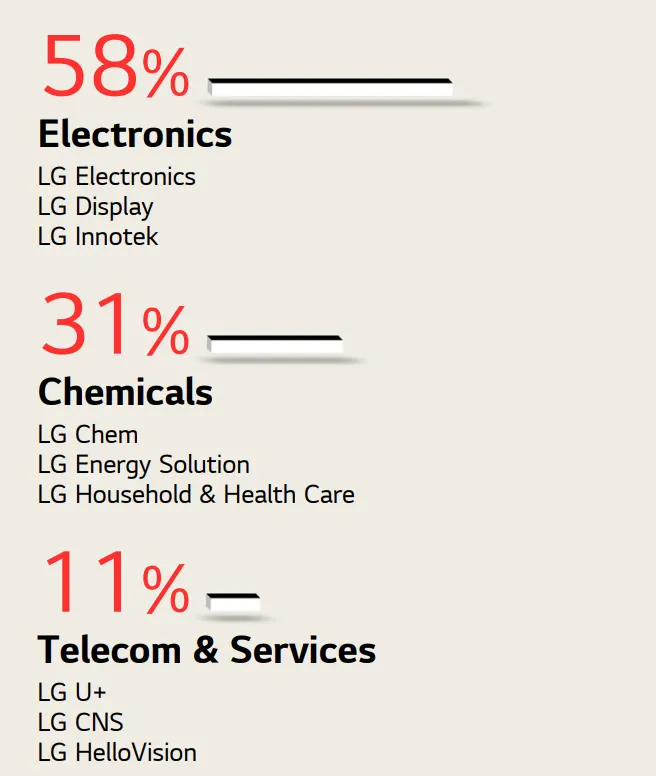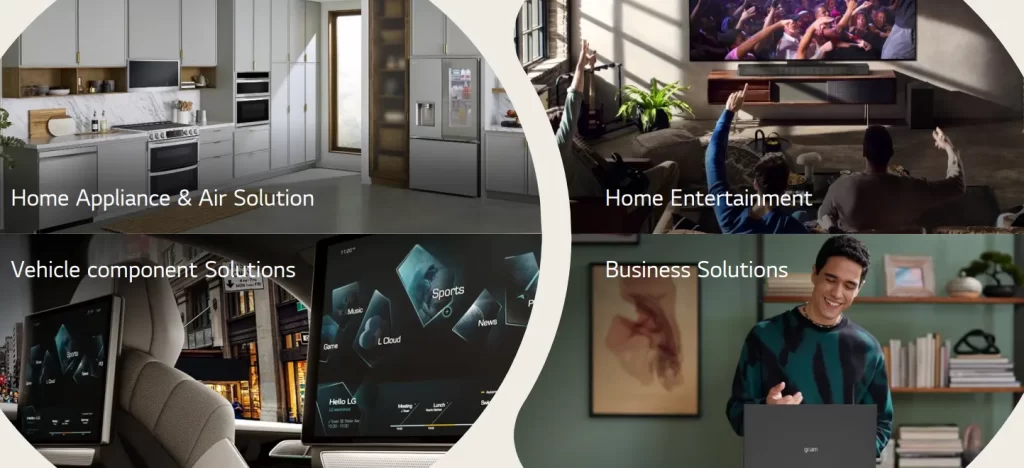Today, LG stands as a colossal conglomerate, with its influence sprawling across numerous sectors.
LGs business by division
LG has three business areas: electronics, chemicals, and telecommunications.
Each business line has its own companies that are responsible for certain production.

Valeriy Artamonov
LG Electronics Division
58%of the percent brings the electronics manufacturing business line.
The company began as a chemical company, producing cosmetics and industrial materials.
Over the years, LG has diversified its business to adapt to market trends and customer needs.

The plastics division produced products such as combs and containers, an important step towards technological innovation.
The real turning point came in 1958 when the company, renamed GoldStar, produced the first radio receiver.
This was not only a technological achievement but also a symbol of South Koreas growing potential in electronics.

This move broadened the companys range of products and services.
This achievement not only added to LGs list of pioneering accomplishments but also enriched its assortment of home appliances.
In summary, the decade from 1960 to 1970 was a period of transformation and growth for LG.
A major highlight of this era was LGs foray into the home computer market.
Computers were rapidly becoming essential in business, education, and, eventually, households.
LGs entrance into this field represented a forward-thinking approach to cater to the needs of a tech-savvy clientele.
But LGs ambition extended beyond monitors.
Given that semiconductors are crucial components of electronic devices, this move was strategically important.
Furthermore, this period saw LG place a strong emphasis on quality and research.
Significant investments were made in research and development to boost the companys innovation capacity.
To sum it up, the 1970s and 1980s were crucial years of advancement for LG.
One of the defining moments of the decade was GoldStars focus on advanced technology.
In 1987, the company began manufacturing videocassette recorders (VCRs), targeting the booming home entertainment market.
Entering this market was another example of LGs ability to understand consumer behavior and needs.
LG also strengthened its telecommunications activities during this decade.
The previously established telecommunications division, GoldStar Communications, expanded its portfolio to include wireless technologies.
This gave the company a strong foothold in the telecommunications boom in the following years.
The 1980s were also important in terms of global expansion.
It entered markets in Europe and other parts of Asia, signaling its intention to become a global brand.
The company decided to rebrand globally with a strong advertising campaign.
Who were eager to buy electronics and home appliances.
In 2000, LG made its mark by developing the worlds first Internet-connected refrigerator.
This period also marked LGs entry into the highly competitive mobile phone market.
Not being the first in the market, LG invested heavily in producing functional and stylish mobile phones.
Research and development remained a cornerstone of LGs strategy.
One of the defining moments of the decade for LG was its pioneering work in display technology.
The 2000s were also significant for LGs mobile phone business.
The company attracted attention with stylish and feature-rich phones such as the Chocolate and Shine.
But the most iconic was the LG Prada, launched in 2007.
Chinese companies emerged to supply markets with low-cost electronics.
And so the TV market changed globally.
Japanese companies failed, ceding international markets to Korean and Chinese companies.
One of the most notable achievements of this decade was LGs work in OLED technology.
In 2012, LG introduced the first 55-inch OLED TV, demonstrating incredibly vivid colors and deep blacks.
This was a prototype; OLED panels were still imperfect at the time.
It took LG another four years for OLED TVs to become a mainstream product.
LG has also made significant progress in the home appliance market.
The phone manufacturing company had been making losses for several years in a row.
LG decided to stop producing phones, which happened in 2021.
By the way, LG made two attempts to produce tablets.
But unsuccessfully their tablets did not gain popularity.
In this decade, LG will upgrade some of its factories, paying more attention to automating assembly processes.
LGs electric car battery business is also doing well.
As users, we know that LG makes TVs, home appliances, air conditioners, and laptops.